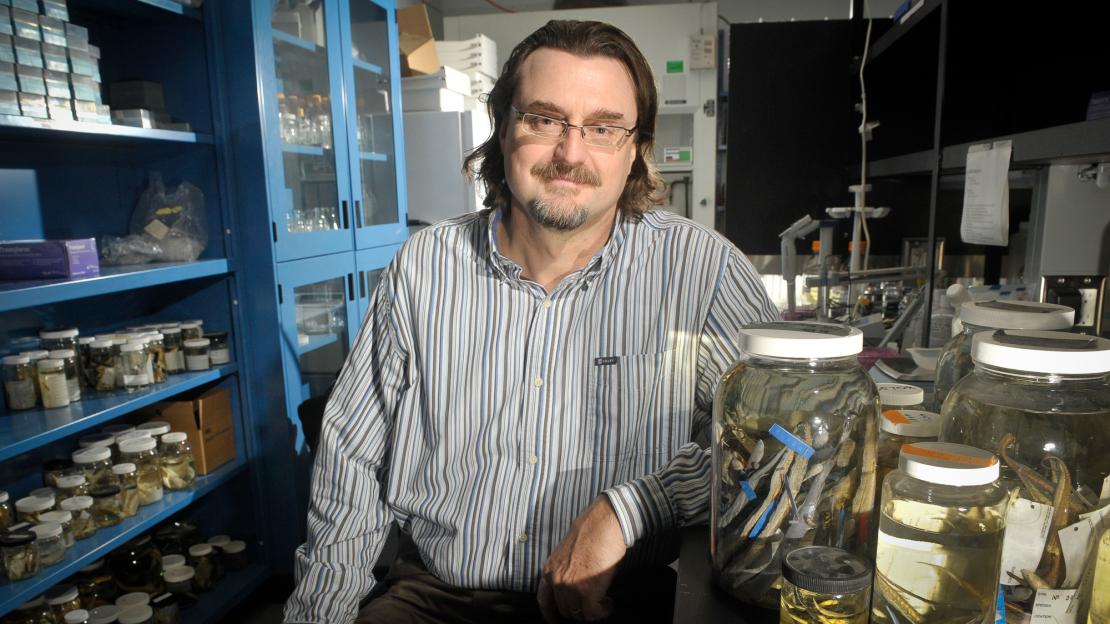A research and habitat recovery project led by a U of T Scarborough professor aims to help fish and freshwater mussel species that are currently at risk of going extinct.
The project, which recently received a $1.8 million grant from the federal government, will target 13 fish and eight freshwater mussel species that are currently at risk in the lower Great Lakes watershed.
“The main threat to these species is habitat degradation and loss, all of which have come as a result of human activity,” says Nick Mandrak, a professor in the Department of Biological Studies and project lead.
“For recovery efforts to be successful, we need to fully understand the specific habitat requirements and the habitat threats for these species at risk.”
The Lower Great Lakes watershed, which is home to countless different aquatic species and habitats across the GTA and southwestern Ontario, currently has 32 fish and 15 mussel species in total that are considered at risk of extinction. These species are found in a variety of habitats including streams, large rivers, wetlands and lakes.
Mandrak says the specific main threats to aquatic habitats come in the form of increasing water temperatures related to climate change and resulting lower oxygen levels, high levels of chloride from road salt, as well as increased murkiness, also known as turbidity, caused by sediments suspended in the water.
He says the main drivers behind these threats has been the conversion of land for agricultural and urban use over the past 150 years.
“We have these flooding events in urban areas because rain is no longer soaked up by the soil, it hits pavement and runs directly into streams,” says Mandrak, an expert on aquatic biodiversity.
“What you end up having is long periods where streams are relatively dry followed by intense flooding, and this wreaks havoc on aquatic habitats.”
Fertilizer is also a major contributor to water pollution in the form of increased nitrogen and phosphorous, adds Mandrak. Phosphorus is specifically responsible for toxic blue-green algae blooms found in Lake Erie.
Many of these species have been ignored or neglected, and that’s a big reason why we’re interested in them.
The fishes, which range from Blackstripe Topminnow to Warmouth, are all smaller species but still play a crucial role in the food chain and overall ecosystem health, says Mandrak. Freshwater mussels also play a critical role in filtering out bacteria, algae and pollutants.
“Many of these species have been ignored or neglected, and that’s a big reason why we’re interested in them. We should be interested in the diversity of species that are important to the proper functioning of our freshwater ecosystems.”
In addition to studying the habitat requirements for these species, Mandrak and the project partners will study the availability of suitable habitats as well as physically restore some habitats. They will also enhance some populations where needed, and develop captive-breeding methods to help specific species rebound in the wild.
The grant, from Fisheries and Oceans Canada’s Canada Nature Fund For Aquatic Species At Risk, will be distributed over four years. Partners on the project include Walpole First Nation, University of Windsor, Toronto and Region Conservation Authority, Ontario Streams, Ontario Nature, Nature Conservancy of Canada and McGill University.
